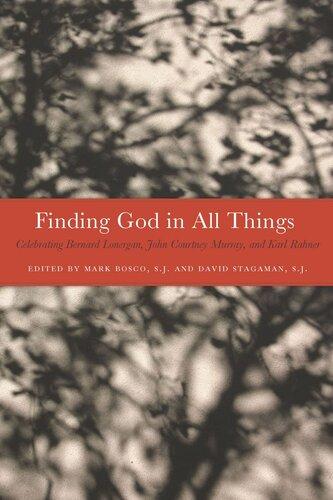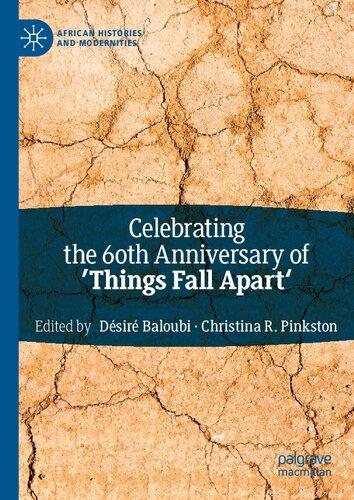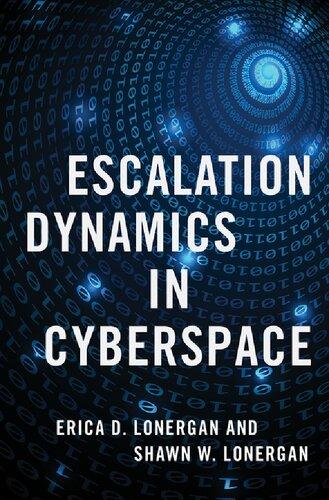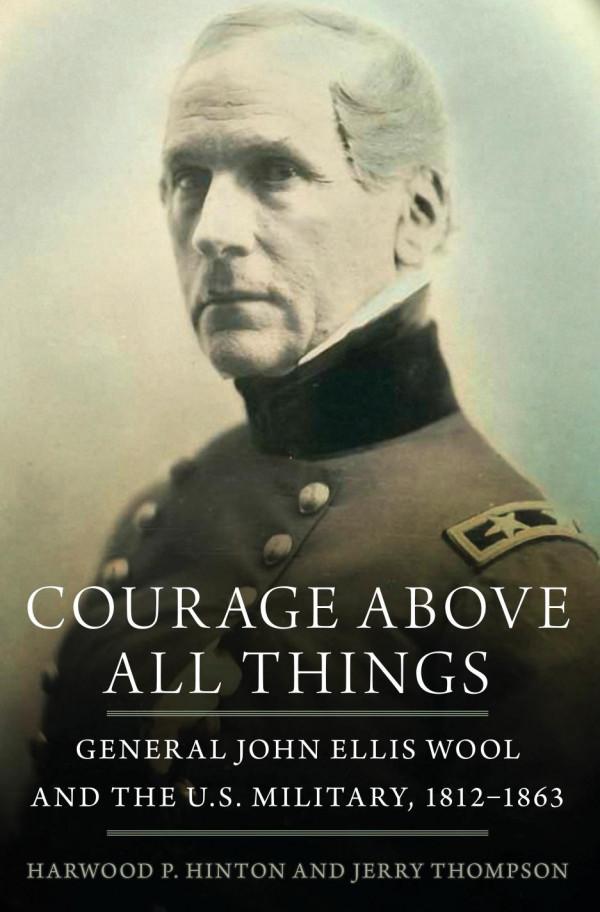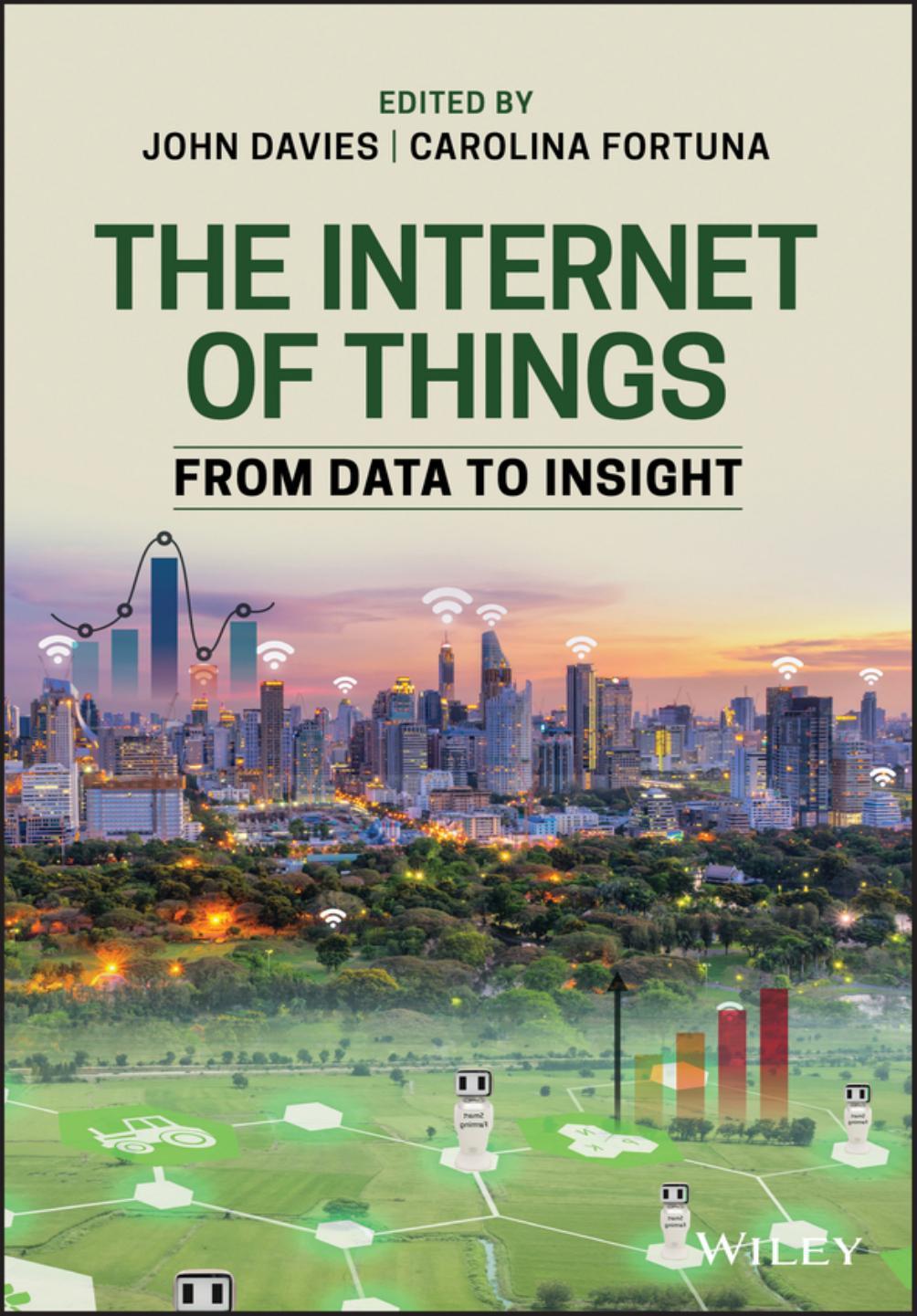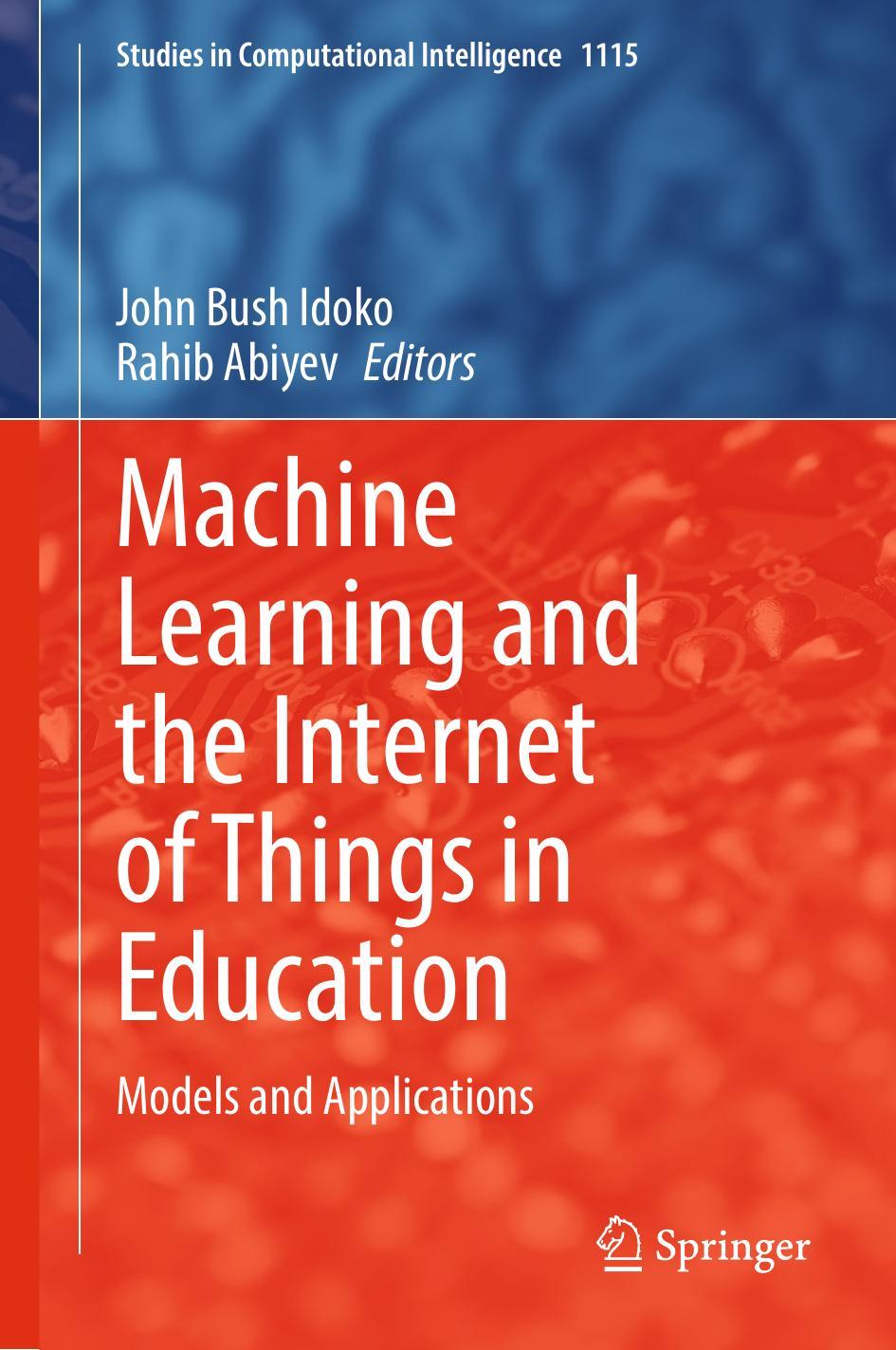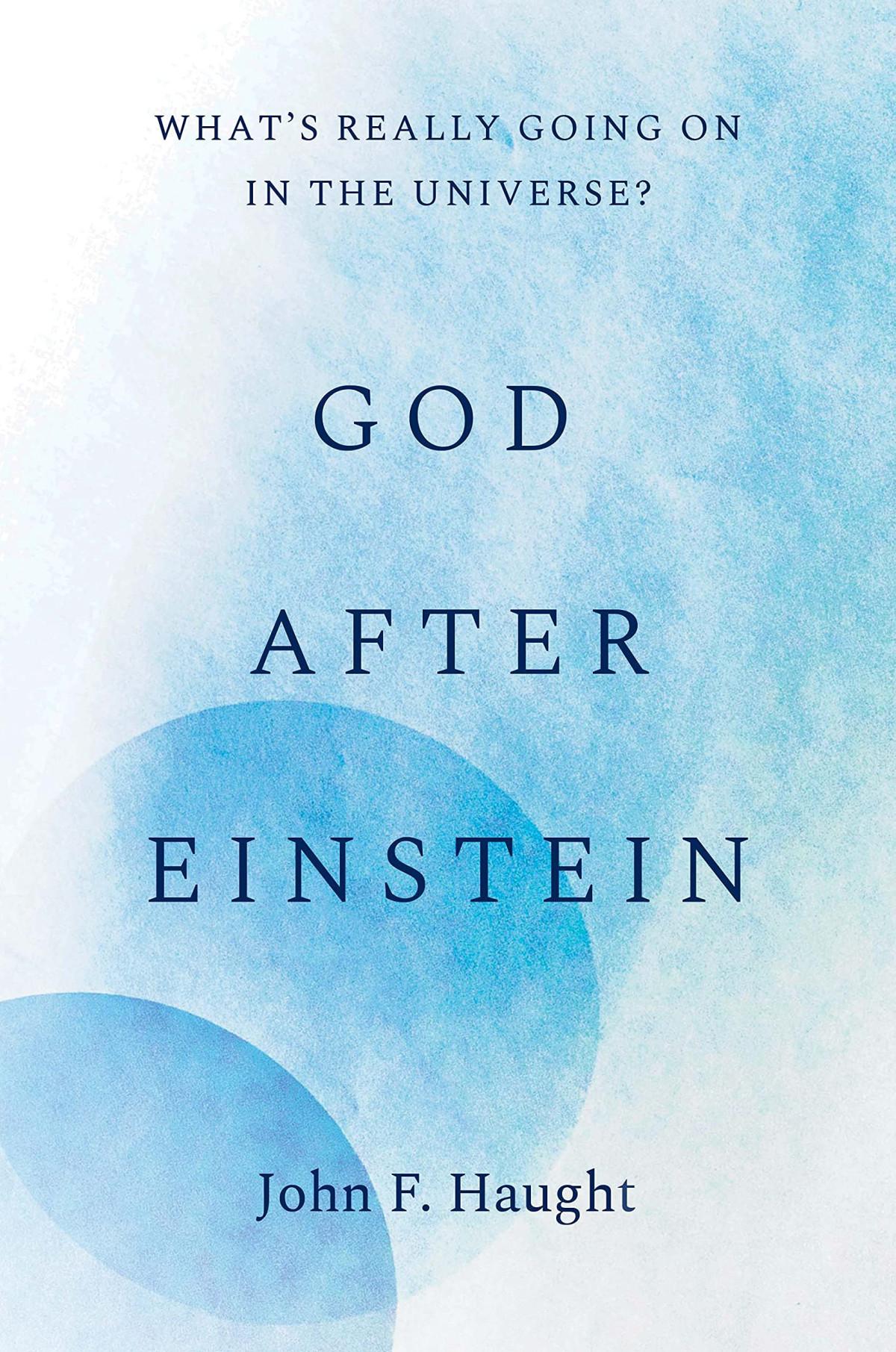FindingGodinAllThings
1. I ntroduction
MarkBosco,S.J.
Ineveryage,thechurchcarriestheresponsibilitiesofreadingthesignsofthetimesandofinterpretingtheminthelightoftheGospel,ifitis tocarryoutitstask.Inlanguageintelligibleto everygeneration,itshouldbeabletoanswerthe everrecurringquestionswhichpeopleaskabout themeaningofthispresentlifeandofthelifeto come,andhowoneisrelatedtotheother.We mustbeawareofandunderstandtheaspirations,theyearnings,andtheoftendramaticfeaturesoftheworldinwhichwelive.
GaudiumetSpes
TheabovesentimentsoftheSecondVaticanCouncil’s PastoralConstitutionontheChurchintheModernWorld captureatransitionalmomentintheCatholicChurch’sattitudeinitsrelationshipwith modernity.Thisshiftisseenmostremarkablyinthelanguageofthe Council,whatJesuithistorianJohnW.O’Malleynotesisachangefrom ‘‘therhetoricofreproach’’soprevalentindocumentsfromprevious churchcouncilstoanembraceofthe‘‘rhetoricofaffirmationandinvitation.’’TherhetoricalchangeinattitudethatpermeatestheCouncil documentswasmatchedbyanewformulationoftheChurch’sconsciousnessofitselfsincetheCouncilofTrentandtheFirstVatican Council.SuchpivotalthemesaboutthenatureoftheChurchfoundnew expressionandemphasis:theacceptanceofhistoricalconsciousnessin thearticulationoftheChurch’shistoryanddoctrine;theimportanceof
2/MarkBosco,S.J.
anactiveroleforthelaity;thespiritofde ´ tentebetweentheChurchand themodernworld;themodificationoftheChurch’sidentitybeyond clericaltermstothemoreinclusive‘‘peopleofGod’’;therenewalin liturgicalpractice;theaffirmationofreligiousfreedomtoworshipaccordingtoone’sconscience;andthestressonhumanrightsasfundamentaltoreligiousfaith.Thus,thepreviously‘‘agonistic’’toneof RomanCatholictheologyatwarwiththeReformationandtheEnlightenmentis,forthefirsttime,givenwhatO’Malleycallsahumbler,‘‘irenic’’timbre.Amorepastoralandtemperatesensibilitysuffusesthe Councildocumentsinordertoexpressinanewwaythe‘‘substance’’ oftheRomanCatholictradition.Indeed,O’Malleyarguesthatifwe wanttounderstandtheCatholicChurchofthepastfortyyearsweneed tothinkaboutthisdistinctivetheological‘‘style,’’thischangeinattitudetowardsmethodologyandexpressionofCatholicbeliefandfaith.1
O’Malley’sformulaisanaptwaytointroducethiscollectionofcentenaryessaysonthetheologicalvisionofthreeofthegreatestJesuit thinkersofthetwentiethcentury.BernardLonergan,JohnCourtney Murray,andKarlRahnerwereinfluentialinbringingtofruition—or deliberativelyextending—therhetoricalandmethodologicalstyleof theSecondVaticanCouncil.Itmightbesaidthattounderstandthepast fortyyearsofCatholictheologyonemustunderstandthecontribution ofthesemen.Interestingly,theywereeachbornin1904duringthe heightoftheChurch’smostmilitant,agonisticrhetoricagainstall thingsmodern.Justthreeyearsaftertheirbirth,theVatican’sCongregationoftheHolyOfficeissuedthedecree Lamentabili (1907),a sweepingcondemnationofsixty-fivepropositionsagainstthe‘‘errorsof theage.’’Twomonthslaterinthesameyear,theencyclical Pascendi DominiciGregis (onthedoctrinesofthemodernists)waspromulgated, followedbyanantimodernistoathforallCatholicbishops,priests,and theologians.Underthisumbrellaofsuspicionandoaths,Lonergan, Murray,andRahnerwerenurturedintheirCatholicfaithandunderwent theologicaltrainingintheSocietyofJesus.Eachofthemintheirown wayfelttheburdenoftheantimodernistpoliciesintheirtheological formation.Andyetbythetimeoftheirmatureworkduringthe1950s and60s,thesethreeindividualswereinstrumentalinhelpingthe Churchusherinacriticaldialoguebetweenmodernity’shistorico-philosophicalexpressionandcontemporaryCatholictheologicalscholarship.Inaneraofde ´ tentewithscienceandEnlightenmentthought(due innosmallparttoPopeJohnXXIII’sCouncil),eachoftheseJesuits
Introduction/3
broughttheirunderstandingoftheCatholictheologicaltraditioninto closerrelationwithmodernoutlooksinphilosophy,history,andpoliticalscience.
Lonergan,Murray,andRahnerwerealsoloyalsonsofSt.Ignatius ofLoyola.Theysharedaspiritualaswellasintellectual‘‘wayofproceeding’’intheirlifeandwork,acertainJesuitstyleencapsulatedin themotto‘‘findingGodinallthings.’’Thoughtheirtheologicalengagementdifferedinemphasisandfocus,thespiritualgroundingoftheir workwasremarkablysimilar,steepedasitwasinthe SpiritualExercises ofSt.Ignatius.OnecanseetheelementsofthisIgnatianstylein theirincarnationalembraceoftheworldasapotentialdwellingplace ofthedivine,theirprobingrealismconcerningthehumanconditionin allitssublimeandsinfulmanifestations,andtheirrespectforhistorical consciousnessinlightoftheirdevelopingfaithinGodandGod’s Church.WhetherintheformofLonergan’stheologicalmethod,in Murray’sreasoneddefenseofreligiousliberty,orinRahner’scountless theologicalinvestigationsintoCatholicdoctrineandpractice,eachcontributedtotheCatholicrenaissanceencapsulatedintheSecondVatican Council’s aggiornamento ,the‘‘bringinguptodate’’oftheancient truthsofChristianfaith.
Inhonorofthecentenaryoftheirbirthin2004,theologicaljournals suchas TheWay and TheologyToday createdspecialcentenaryissues, whilemanypubliclecturesandacademicconferenceswereheldatJesuituniversitiesandtheologicalcentersthroughouttheworld.Manyof theseanniversarycelebrationsfocusedonhowthetheologicalinvestigationsofLonergan,Murray,andRahnerstillimpactthestyleandcontentofCatholicdiscoursetoday.MyacademichomeatLoyola UniversityChicago,forexample,sponsoredauniversity-wideconferenceinthespringsemesterof2004.SpeakerssharedpersonalmemoriesofhavingknownLonergan,Murray,orRahner,andoffered scholarlyanalysisonhowthesetwentieth-centuryfiguresarestillimportantforthedoingoftheologyintheChurchofthetwenty-first century.
Thispresentcollectionrepresentsasamplingofthemanyessaysand lecturesfromthoseanniversarycelebrations,writtenfor,producedby, orpresentedatavarietyofvenuesthroughout2004.Fouressayson eachofthesemen,varyinginstyleandcontent,havebeenchosenin ordertogiveabroadrangeofperspectivesontheirlifeandwork.Some oftheessaysarepersonal,anecdotalaccountsofhavinglivedwithor
4/MarkBosco,S.J.
studiedunderLonergan,Murray,orRahner,showingthehumanity oftenhiddenundertheireruditeintellects.Otheressays,comingfrom scholarsoftheirwork,aremoreacademicintheirfocus,assessinghow thesethreefiguresstillhavemuchtooffercontemporarytheological discussion;andsomeessaysfallinbetweenthesetwopoles,offering thelaypersonanintroductiontotheimportoftheirworkandhowit stillhelpstoshapethewayCatholicsthinkandtalkaboutGod,church, andstate.Itisourhopethatthecollectiongivesthereaderamultifacetedcompositethathonorseachman’scontributionandshowstheongoingrelevanceofthatcontributionintheologicaldiscoursetoday.
TheessaysbeginwithBernardLonergan,borninCanadaonDecember17,1904.LonerganenteredtheSocietyofJesusatGuelph,Ontario,in1922andhadatrulyinternationalJesuiteducation,studying philosophyatHeythropCollegeinEnglandandtheologyattheGregorianUniversityinRome.SometimesreferredtoasaTranscendental Thomist,hewashighlyinfluencedbytheworksofbothThomasAquinasandJohnHenryNewmanduringthecourseofhisstudies.Lonergan’stwogreatworks, Insight:AStudyofHumanUnderstanding (1957)and MethodinTheology (1972),stillattractsignificantattention atmanyuniversitiesandinstitutesandatconferencesheldannuallyby academicsocietiesthroughouttheworld.2 Lonergan’sdense,philosophicalwork, Insight,takesasitstaskthecriticalmannerinwhichthe humanpersonacquirespossessionofhisorherownconsciousness.He attemptstoillustratethestructureofpersonalinsight,ofwhathecalled ‘‘insightintoinsight.’’ MethodinTheology,ontheotherhand,aims, amongotherthings,togivethevarietyofwaysthattheologicalinvestigationisgroundedinitsowncomplexmethodology.Bothworkshave helpedtoreconceiveCatholictheologyasaninterdisciplinaryenterprisethatinfluences—andisinfluencedby—allofhumanculture.
ThetheologianDonaldL.Gelpi,S.J.,beginsthefouressaysthatcelebrateLonergan’sachievement.Gelpigivesaconcisetreatmentof Lonergan’smajorphilosophicalbreakthroughsintheologicalmethod andoffersclearsynopsesofwhathethinksaretheprimaryissuesat playintheongoingapplicationofhiswork.Gelpithendescribeshow hehastriedtoappropriateLonergan’sintellectualprojectforhisown theologicalreflection,whileatthesametimecomingtotermswith whatheseesasthelimitationsofLonergan’stheoryofmethodintheology.CriticalofLonergan’sendorsementofKantiantranscendental
Introduction/5
logic,GelpiarguesthattheAmericanphilosophicaltraditionrepresentedbyCharlesSandersPeirceprovidesasounderphilosophical groundingforLonergan’stheories.Elaboratingonhowthisinsightinto Peirce’slogictransformedhisownfundamentalreorientationasatheologian,GelpiextendshowLonergan’sthoughtcanbereimaginedand reworkedfortheongoingjourneyofintellectual,moral,andreligious conversionthatisnecessarytodomeaningfultheologyinthetwentyfirstcentury.
PatrickH.Byrne’sessaypicksupwhereGelpi’sleavesoff,discussingtheimportanceofLonergan’sthoughtbyexplicatinghisuseofthe phrase,‘‘thepassionatenessofbeing.’’Hetracestheimportofthis phrasetoLonergan’snotionoftheimplicitandexplicitparadigmsthat shapehumanwaysofthinking,feeling,andjudgment.Eachindividual hasanunconscious,implicit‘‘metaphysics’’operatinginone’slife: one’sassumptionsandideologies—inheritedfromparents,friends,culture,andreligion—becometheunconsciousparadigmofone’sreality.
ByrnenotesthatLonergan’scontributionistoproposethatthereisanother‘‘FirstPhilosophy’’inherentinhumanbeingsaswell,onewhich doesnotcomefromtheworldaroundusbutfromthesenseofreality builtintoourcognitionalstructure.Wehumanbeingsgetpassionate aboutourinsightsintoourselvesinaprofoundlydifferentwaythanthe implicitparadigmsoperatinginourlives.Indeed,thisinnate,explicit metaphysicsorFirstPhilosophyhastodowithreflectiveself-awareness,whatLonergancalls‘‘self-appropriation.’’Byrneshowshowthe notionofself-appropriationisconnectedtotheology,howitbecomes, ineffect,themajortaskoftheology:toself-appropriateGod’sself-gift ofpassionate,unconditionalloveasrenderedintheChristiantraditions, soastomoveustopreachthispassionateloveandtransformtheworld.
ElizabethA.MurraydelvesevendeeperintoLonergan’sunderstandingofhumanconsciousnessinordertofindwhatshecallsthe‘‘key’’ tohisphilosophy.ArguingthatLonerganstartsinthepolymorphicnatureofhumaninteriority,shechartsthestagesofconsciousnessthat emergeinthedynamic,intentionalprocessofself-appropriation.This momentofinsightisLonergan’smethodologicalkey.Murraysuggests thatLonergan’sphilosophicalmethodologycanbeemployedinorder tosafeguardthecomplexnatureofconsciousness,amethodologythat keepsintensiontheunderstandingofconsciousnessasan‘‘actof knowing’’andconsciousnessasan‘‘actofidentity.’’ShedefendsLonergan’sideaoftheappropriatedselfagainstmodernandpostmodern
6/MarkBosco,S.J.
reductions.Indeed,sheshowsthatLonergan’sfocusonthepivotalact ofinsightintoone’sself-appropriationhelpsustosteerclearofthedenialorneglectoftheselfthatissoprevalentinmodernvarietiesof philosophicalempiricism,rationalism,andphenomenology.
JohnC.Haughey,S.J.,concludesthesectiononLonerganwithhis somewhathumoroustitle,‘‘Lonergan’sJaw.’’Thetitlereferstoarecent newspaperarticleaboutthediscoveryofthemutationofageneabout 2.4millionyearsagothatleadtomuchweakerjawsincertainprimates. Buttheupsideoftheseweakerjawswasthegrowthoflargerbrainsin thedevelopmentofthehumanspecies.HaugheyusesthisrecentscientificdiscoveryasaspringboardtodiscussLonergan’sworldviewof ‘‘emergentprobability,’’aviewthatdescribeshowtheongoingaccumulationofscientificandhumanisticdatahelpsaccountforthecomplexinterdependencyofcosmicevolution.Haugheyilluminateshow Lonergan’snotionofemergentprobabilitychangestheverynatureof howwespeakabout‘‘Godtalk’’andabouthumantranscendence.For Lonergan,emergentprobabilityhasitsgreatestreferentintheintersubjectiveexperienceoflove,aself-transcending,transformativeactthat changestheworld.HaugheynotesthatforLonergan,thehumanperson isaco-creator,activelyinterveninginthedramaofthecosmos,assistingitsprogressorhaltingitsdecline.Weare,inLonergan’sword, ‘‘emergents’’whoseprimaryactistoannouncethegoodnewsofJesus, hewho‘‘spansthedividebetweenusandtheapesandusandthe Trinity.’’
Thesecondsetofessaysconcerntheverypublictheologian-intellectual,JohnCourtneyMurray.BornonSeptember12,1904,inNewYork CityofIrishandScottishancestry,MurrayenteredtheSocietyofJesus in1920and,likeLonergan,earnedhisdoctorateintheologyfromthe GregorianUniversity.Hewouldspendthemajorpartofhiscareer teachingthetheologyofgraceandTrinitytoJesuitseminariansat WoodstockCollegeinMaryland;healsoservedasaneditorof TheologicalStudies and America,theJesuitnationalweeklymagazine. ThoughMurrayisperhapsbestknowntodayforhiscontributiontothe publictheologyofchurch-staterelations,hisecclesiasticalsuperiors forbadehimfrompublishingonthistopicforatimeinthe1950sbecauseitveeredtooclosetomodernist,Americanistcontroversiesinthe Church.In1960Murraywasfinallygivenpermissiontopublishwhat wouldbecomehismostfamouswork, WeHoldTheseTruths:Catholic ReflectionsontheAmericanProposition,advocatingthecompatibility
Introduction/7 ofAmericanconstitutionalismwithRomanCatholicism.3 Laterthat sameyear,hegainednationalnotorietyasacelebrityintellectualwhen hewaschosenasthecoverpiecefor Time magazine’sDecember12 issue.AttheinvitationofFrancisJosephCardinalSpellman,archbishopofNewYork,MurraywasnamedatheologicaladviseratVatican II,inwhichhehelpedwritetheCouncildocumentonreligiousliberty, DignitatisHumanae.In1967,shortlyafterreturningfromtheCouncil, JohnCourtneyMurraydied.Hispublishedworkreflectedhisdeepconcerntopromotegenuinedialogueaboutthecommongoodinapluralisticsociety—adialogueoftensadlylackingincontemporarypubliclife. AsPeterMcDonoughnotes,‘‘Murray’srenownrestedonhiscapacity topersuadeCatholicsandnon-Catholicalikethatreligioustolerance andpoliticalpluralismwereacceptableandevenpraiseworthy.’’4 His understandingofpluralismenvisionedstatesmanlikeleadersinvolved inreasoneddebateaboutthecivilandmorallawthatcouldhelpdefend thecommongood.
MichaelJ.Schuck’s‘‘JohnCourtneyMurray’sAmericanStories’’ beginsthissetoffouressaysbyhighlightingtheimportantrelationship betweenMurray’sconsciousnessoftheAmericanpropositionandthe Murrayfamily’sownimmigrantrootsinNewYorkCity.Schuckgives usauniqueperspectiveonhowthelivedexperienceoftheCatholic immigrantstoryofAmerica—withitsaccountsoffreedom,courage, andhardwork—nurturedthegroundfromwhichMurraybuildshisunderstandingofapublictheology.SchucknotesthatthepillarsofMurray’stheologyfocusedonanimmigrant’svision:humanfreedom,the couragetoopenuptogenuinedialogue,andthehardworkitwould taketomaintainit.
Thenextessayinthissectionisthemostpersonalofthefour,writtenbyMarkWilliams,thenephewofJohnCourtneyMurray.AgraduateofGeorgetownUniversity,NewYorkUniversityLawSchool,anda successfulbusinessman,hewasaskedtogivehisthoughtsatGeorgetown’scentennialcelebrationonhis‘‘UncleJack.’’Williamsrevealsan intimateportrayalofMurray’srelationshiptohisfamilythroughthe oftenhumorousandalwaysinsightfulanecdotesthatheremembers abouthisfamousuncle.IfSchuckillustratestheimportanceofthelived experienceoftheimmigrantonMurray’stheologicalimagination,WilliamsallowsustoseethehumanityofMurrayandhowhisfamily playedalargepartinconfirminghisAmericanimmigrantsensibilities.
8/MarkBosco,S.J.
‘‘MurrayonLovingOne’sEnemies,’’theingenioustitleoftheessay byLeonHooper,S.J.,usesthebiblicalexhortationtoillustrateMurray’sspiritualandintellectualjourney.HeshowshowMurraygrew deeperinhisCatholictraditionbeforehavingtotranscendandtransformthelimitationsofthattraditioninordertoentergenuinedialogue withtheworld.Hoopernotesthat‘‘whileMurrayneverwrotemuchon lovingone’senemies,hedidhaveaclearlyidentifiableenemieslist.’’ HetakesusthroughMurray’slist—theideaofAmericanism,theprofessorsandadministratorsatCatholicUniversityofAmerica(who helpedtosilencehim),AmericanProtestantsingeneral,andatheistsin particular.HooperdeftlydescribesMurray’s‘‘hatred’’towardeach, howhisownCatholictraditionconsciouslyandunconsciouslyfostered thathatred,andhowhefoundhiddeninthattraditionawayto‘‘bear thecross’’ofothersandcometoloveone’senemies.
ThomasHughson,S.J.,endsthesectionwithhisessay‘‘Murray: FaithfultoTraditioninContext,’’furtherexcavatingMurray’srelationshipbetweentheAmericanexperienceandthelegacyofRomanCatholicpoliticalthought.HughsonfirstshowshowMurray’sCatholic, natural-lawstyleofmoraltheologyoverlappedwiththeEnlightenment deismoftheFoundingFathers.MurraysawthattheChristiantradition waswhatHughsoncalls‘‘abiblicalleavenworkingfromwithinupon Westernpoliticalself-understandingandpractice.’’WhatMurrayforegroundedthroughbothhisscholarshipandinhisparticipationatthe CouncilwastherichnessoftheAnglo-Americanlegacyofconstitutionalism,alegacyseeminglyunknowntotheCatholicworldofLatinEuropeandcertainlymissingfromLeoXIII’s1901encyclical Gravesde CommuniRe onChristiandemocracy.Hughsonarguesthatitistimeto retrieveMurray’svisionfortheChurchtoday,especiallyintermsofthe relationshipbetweenthechurchandthestate,andthedistinctionofthe moralandlegalordersthatmustbeweighedinapluralisticstate.Murraybelievedthatconscienceshouldalwaysbeprotectedinthistension, notbecausefreedomisitsownreward,butbecauseconscienceisthe pointwherethegospelandpoliticallifemeetandinteract.
Perhapsthebestknownandmostpublishedofthethreetheologians ofthecentenaryyearisKarlRahner,bornonMarch5,1904inFreiburg,Germany.HeenteredtheSocietyofJesusin1922,followingin thefootstepsofhisbrother,Hugo.Ordainedin1932,Rahnerbeganhis academiccareerasaphilosopher,spendingfoursemestersattending thelecturesofMartinHeideggerattheUniversityofFreiburg.Rahner
Introduction/9 wouldlatersaythatthoughhehadmanygoodprofessorsinhisstudies, ‘‘thereisonlyonewhomIcanrevereasmyteacher,andheisMartin Heidegger.’’5 In1936Rahnerwithdrewfromphilosophyandtookhis doctorateintheology,nowfullyconvincedoftheneedtoreshapeThomistictheologyinlightofHeidegger’scritiqueofphilosophy.Rahner wouldgoontopublishover3,500essays(collectedinfourteenvolumes),sixdictionariesandencyclopediasoftheologyand,lateinhis life,hisbook FoundationsofChristianFaith:AnIntroductiontothe IdeaofChristianity,whichisstillinprinttoday.6
Rahner,likeLonergan,issometimesreferredtoasaTranscendental Thomist,takingseriouslytheKantianturntowardthesubjectinlightof Aquinas’sepistemologicalandontologicalclaimsaboutreality.Rahner positsthathumanbeingsarebytheirverynatureself-transcendentand thatGodistheendpointofthathumandrivetowardself-transcendence. OneofhisgreatestlegacieswashisreformulationofthewaytheologiansspeakaboutexperienceofGod:anencounterwithinfinitemystery,anuncategoricalexperiencedeepwithinthestructureofthe humanbeingthatdrawsforthone’sdesirefortruth,goodness,and beauty.Rahner’sperspectiveisseeneverywhereinCatholictheology duringthetimeoftheCouncil,mostespeciallyinthemannerofstyle thatO’MalleyarticulatesasoneofthehallmarksoftheSecondVatican Council.HiscontributionattheCouncilrestsinhisabilitytoreframe thedogmaticformulasofCatholicismsothattheirtenorwasradically reinterpretedinamoreinclusive,ecumenical,andpastorallanguage, evenasthescholasticlanguageofformalorthodoxywasmaintained.
‘‘OnReadingRahnerinaNewCentury,’’byLeoJ.O’Donovan,S.J., isthefirstessayofthissection.HeattemptstoanswerwhyRahnerisa necessarycompanionfortheologicalreflectioninthecomingdecades. ContrarytotheusualclassificationofRahnerasatheologianengaged withmodernity,O’DonovanholdsthatRahnermorerightlyqualifiesas apostmoderntheologian,arguingthatthereisanexplicitcritiqueof modernitytracedthroughouthisoeuvre.O’Donovantracesthislineof reasoningbyanalyzingwhathecalls‘‘pivotalinterpretiveissues’’in Rahner’sthoughtthataredecisiveinreadinghimtodayandintothe twenty-firstcentury.
HarveyD.Egan,S.J.,followswith‘‘KarlRahner’sTheological Life,’’averypersonalreflectionandassessmentofthemanwhomhe studiedunderinhisowntheologicaltraining.Eganremindsusthat thoughthereweremanythinkerswhoinfluencedtheformationof
10/MarkBosco,S.J.
Rahner’stheology,RahneralwayscontendedthatitwastheChristian mysticsandhisownJesuitspiritualitythathadthegreatestsignificance onhiswork.EganarguesthatRahnerdeservesthetitle‘‘DoctorMysticus’’oftheChurch,forGod’sself-communicationtohumanpersons isalwaysattheheartofhistheologicalvision,howeverdifficultorhiddenthatexperienceofGodmightbe.Eganrecallshisownmemories andthoseoffriendswhorememberRahnerasadiscipleofthe Spiritual ExercisesofSt.Ignatius,servingothersgenerouslyasspiritualdirector andpastor.ItisnotbyaccidentthatRahner’slonglistofpublications beginandendwithabookonprayer,bookends,asitwere,foraman whosetheologicaltaskcameoutofhisdesiretoknowandtolovethe endofalltheologicalendeavors,theGodofJesusChrist.
TheessayofGeorgeE.Griener,S.J.,picksupwherebothO’DonovanandEganleaveoff,furtherdevelopinganunderstandingofRahner asapastoraltheologian.The‘‘heart,’’Greinernotes,isthemajortheme ofRahner’stheologicalproject.Greinerbeginsbygivingthehistorical contextoftheGermanworldinwhichRahnerlived:theProtestantReformation,theEnlightenmentthoughtofGermanphilosophy,thework ofKantandHegel,theKulturkampfontheCatholicChurchin1872, thecriminalizationoftheSocietyofJesusinGermanyuntil1917,the oathagainstmodernism,andthetwoworldwars.Alloftheseevents helpedtohonethepastoralvisionofRahner’stheology.Greinerthen triestotouchuponsomeoftheoverridingthemesthatcomeoutof Rahner’sgrapplingwithsuchaworld.LikeEgan,henotesthatRahner’stheologyofgraceasGod’sself-communicationisthelensby whichallofhistheologyisbased.
JamesVoiss,S.J.,offersafinal,constructiveessayonRahnerby pairinghimupwithanothertwentieth-centurytheologianwhoisundergoingarenaissanceofstudy,theGerman-Swisstheologian,HansUrs vonBalthasar.BornayearafterRahnerandhimselfaJesuitformany years,vonBalthasar’stheologicalprojecthasoftenbeenjuxtaposedto Rahner’stheologicalmethodologyandoptimistictenor.IfRahnerwas hopefulabouttheChurch’sengagementwithmodernityandtheprogressofVaticanII,vonBalthasarwashighlycriticalofwhathecalled the‘‘epic’’pretensionsofthemoderntheologicalproject.VonBalthasar’sstartingpointintheologicalaestheticsisamarkedlydifferent startingpointthanRahner’sTranscendentalThomism.Thetwotheologians,oftenatoddsintheirtheologicaljudgmentoftheother’swork,
Introduction/11 continuetorepresenttwocompetingvisionsoftheologicalinvestigationtoday.Voiss’scontributionistoattempttofindaconciliatoryreadingofthesethinkersbyarguingthatitisfalsetoconcludethatRahner lacksatheologicalaesthetic,albeitonethatisonlyimplicitinhiswork. VoissfirstengagesvonBalthasar’scriticalappraisalofRahner’stheologicalmethodandthenattemptstorespondtothesechargesbyofferingamuchnuancedinterpretationofRahner’stheologyinlightofthese charges.VoissfindsthatthroughoutRahner’smorethan4,000titles, onecanfindevidencetosuggestthatRahnerwastheologicallysensitive toatheologicalaesthetics,evenifitisneverfullyarticulatedinhis work.Ineffect,Voisshelpsbothtoexposethesomewhatartificialgap thatexistsbetweenRahnerandvonBalthasar’stheologyandtoextend pathsinwhichfutureRahnerscholarshipmightlead.
Finally,DavidStagaman,S.J.,offersapostscripttotheessayson Lonergan,Murray,andRahner.Helooksbackonthehistoryoftwentieth-centuryCatholictheology,chartinghisownabsorptionoftheir workashematuredasaJesuittheologianandscholar.Stagamanfirst situateshisdiscussionoftheirworkinthephilosophicalquestionsthat arisefromthefatherofTranscendentalThomism,JosephMare ´ chal. Lonergan,Murray,andRahnerweredeeplyaffectedbyMare ´ chal’sattempttoplaceImmanuelKantandThomasAquinasintoafruitfuldialogue.Stagamanthenturnstoeachofourcentenarians,offeringhis ownsenseofthereceptionoftheirworkbythetheologicalcommunity intheUnitedStatesinthepastcentury.Heendsbynotingthatthe DominicanpriestYvesCongarwasanotherimportanttheologianofthe year1904,connectingthetheologicaldotsofthetwentiethcenturyto makeitaverygoodyearindeed.
Whatalloftheessaysshareisadeepregardforthesepioneering theologians.TheycelebratetheirlifeandworkandpointtonewavenuesofreflectionandresearchforthecontemporaryChurch.Themany threadsoftheirtheologicalfocuswereboundtogetherintoonelarge patterninthedefiningmomentoftheSecondVaticanCouncil.Each foundintheCouncilanopeningtoexplorethemeaningofChristian faithinthemidstofthe‘‘joyandhope,thegriefandanguishofthe peopleofourtime.’’Eachinhisownwaywasabletointegratethe wisdomoftheChurch’spastwiththenovelpossibilitiesofthepresent andsuggestafuturesearchformeaning.
2. L earningto L ivewith L onergan
DonaldL.Gelpi,S.J.
BeforejoiningthefacultyoftheJesuitSchoolofTheologyatBerkeley, California,Itaughtphilosophyandsupervisedtheacademicprogram oftheJesuitscholasticsstudyingatLoyolaUniversityinNewOrleans. ItaughtinthephilosophydepartmentbecauseIhaddonemydoctorate inphilosophywithaspecialfocusonAmericanphilosophy.Iwanted tospendmyprofessionalacademiccareerdoingtheology;butIhad studiedenoughtheologyasaJesuitscholastictorealizethatunlessone bringstosystematictheologyanewsetofcategories,onewindsup rehashinghistory.Iwantedtocreateaninculturatedtheologyforthe UnitedStateschurch,andIwantedtouseAmericanphilosophybothas apointofentryintoAmericancultureandasasourceofspeculative theologicalcategories.
Inthespringof1973,thesemesterbeforeIcametoBerkeley,three Jesuitscholasticsaskedmetoteachthemaseminarinthethoughtof BernardLonergan.IhadnospecialinterestinLonergan,butIhadno objectiontogettingdeeperintohisthought.Moreover,Lonergan’slast andgreatestwork, MethodinTheology,hadjustappeared,and,sinceI wouldbeteachingtheologyhereinBerkeleythefollowingyear,it madesensetometogetontopofthatimportantwork.1
Thatsemesterseemstomeinretrospectprovidential. Methodin Theology remainsinmyjudgmentthebestanalysistodateonhowtheologyworks,eventhoughIhavestrongreservationsaboutanumber
16/DonaldL.Gelpi,S.J. ofthepresuppositionsthatLonerganusestogroundhistheoryofhow theologiansoughttothink.BytheendoftheseminaronLonergan,I haddecidedthatinBerkeleyIwouldtestLonergan’smethodbyusing it.Ihavebeendoingthatinasystematicwayforoverthirtyyears,and inthisessayIwouldliketosharewithyousomeofthethingsIhave learnedfromthirty-some-oddyearsoflivingwithLonergan.
Ishallattempttodothreethings.First,Iwouldliketogiveyousome senseofwhoBernardLonerganwas.Second,Iwilltrytosketchfor youthescopeofhisintellectualproject.Third,Iwouldliketoshare withyouwhatIperceiveasthestrengthsandlimitationsofLonergan’s theoryofmethodintheology.
BernardLonerganwasbornonDecember17,1904,inBuckingham, theprovinceofQuebec,Canada.Hewouldacquiretwoyoungerbrothers.Itquicklybecameapparenttobothhisfather,GeraldJ.Lonergan, whoworkedasalandsurveyor,andtohismotherJosephine,thatthey hadbegottenaveryprecociouschild.Heattendedelementaryschool withtheChristianBrothersinhishometown.Laterhegotathorough groundinginLatinandGreek,inthehumanities,andinmathematicsat LoyolaHighSchoolinMontreal.
HejoinedtheJesuitsattheageofseventeenandreceivedhisphilosophicaltrainingatHeythropCollegeinLondonfrom1926to1929. HesubsequentlyearnedabachelorofartsintheclassicsatLondon Universitybetween1929and1930.ByhisownaccounthefeltsignificantlystruckatthemodestyoftheEnglishJesuitswhotaughthim philosophy.HistutorCharlesO’Hara,S.J.,deepenedhisgraspofmathematics.LewisWatt,S.J.,introducedhimtoissuesineconomicsand toCatholicsocialteaching;LonerganclaimedthatreadingJohnHenry Newman’s AnEssayinAidofaGrammarofAssent madehiminto somethingofanexistentialist.Thatworkwasdestinedtoinfluencesignificantlyhisthinkingin Insight,hismostimportantphilosophical work.Duringtheseyears,Lonergansoughttofindinsociology,ineconomics,andinhistoryaspeculativebasisfortherealizationofthegreat socialencyclicals.
Inthelate1940s,LonergantaughtattheThomasMoreInstitutefor AdultEducationinMontreal.Hislife-longfriendandcollaborator,R. EricO’Connor,S.J.,hadfoundedtheInstitute.Theseyearsoflecturing andresearchproduced Insight:AStudyofHumanUnderstanding.2
In1953,Lonerganbecameaprofessorofdogmatictheologyatthe GregorianUniversityinRome.HislecturesinLatinonChristologyand
LearningtoLivewithLonergan/17
theTrinityappearedaspublishedLatintexts.Lonergancharacterized theseexamplesoftextbooktheologyastheproductofa‘‘hopelessly antiquated’’teachingsituationattheGregorian.Theprimitivestateof theologicalthinkingcombinedwithhisstudiesofEuropeanscholarship,hermeneutics,andcriticalhistory,launchedhimonhismostsignificanttheologicalproject:namely,rethinkingmethodintheology.
TowardtheendofhistwelveyearsinRome,Lonergandeveloped lungcancer.Oneofhislungswasremoved,buthissuperiorsmadeit possibleforhimtocompletethewritingof MethodinTheology.After hisretirement,heheldtheStillmanChairinCatholicStudiesatHarvard DivinitySchoolandspentseveralyearsteachingatBostonCollege. BernardLonergandiedatPickering,Ontario,onNovember26,1984.
IwillbeginmyattempttodescribethescopeofLonergan’sspeculativeprojectbylookingathisdeeprootsintheThomistictradition.This firstappearsinhisearlystudiesinthe1940sofoperativegraceinAquinas.AsubsequentprobingofthemindoftheAngelicDoctorproduced asecondseriesofscholarlyarticlesontheroleofthe verbum,orinner word,inAquinas’saccountofhumancognition.Inhisstudyofoperativegrace,Lonergandramatized,throughthestudyofaspecifictheologicalproblem,thatmedievaltheologyexhibitedaspontaneousdrive towardsystematization;and,ashisthoughtdeveloped,Lonerganwould exhibitagrowingpreoccupationwithunderstandingthenatureofsystematicthinking.His verbum articlesbegantodefinehowLonergan wouldundertaketograspthenatureofsystematicthinking:namely, throughastudyofhumaninteriority.
Lonergan’searlyprobingofthethoughtofAquinaslocatedhimsolidlyintheThomisticrevivaloccasionedbyPopeLeoXIII’sencyclical AeterniPatris,(OntheRestorationofChristianPhilosophy), issued August4,1879(DS3135–3140).Theencyclicalstimulatedamore systematicscholarlyretrievalofAquinas’sthought;buttheThomistic revivalatthebeginningofthetwentiethcenturyalsosoughttodemonstratethecontemporaryrelevanceoftheThomisticsynthesisbyputting itintodialoguewithmodernandcontemporarythinkers.Duringhis yearsattheThomasMoreInstituteinMontreal,Lonergansethimselfto advancethissecondaspectoftheThomisticrevivalinaverysystematic manner.Hiseffortsproducedhisfirstmajorwork: Insight:AStudyof HumanUnderstanding.
HereIshouldwarnyouthatonecannotunderstandwhatLonergan istalkingaboutwithoutprobinghisphilosophy.Lonerganbeganhis
18/DonaldL.Gelpi,S.J. careerasaphilosopheranddevelopedintoasystematictheologian;but hissystematictheology,includinghistheoryofmethodintheology, incorporatesintoitmanyofthephilosophicalpositionshedeveloped inwriting Insight.Iwilltrytoexplainsomeofthemoreimportantphilosophicalissueswithoutoversimplifyingthem.
Lonerganderivedhismostimmediateinspirationforadvancingthe ThomistictraditionspeculativelyfromtheworkofJosephMare ´ chal,a BelgianJesuit.Mare ´ chaltriedtodemonstrateAquinas’scontemporary relevancebyputtinghisphilosophyintodialoguewiththatofImmanuelKant,whohadtriedtodeduceaprioritheconditionsforthepossibilityofscientificknowing,ofmoraljudgment,andofaesthetic judgment.
Kantbeganhisphilosophicalcareerasarationalist,buthisreading ofDavidHumewakenedhimfromwhathecalledhisdogmaticslumbers.ThroughHume,Kantabsorbedtheconceptualnominalismofthe Britishempiricaltradition.Nominalismdeniestherealityofuniversalityorofrealgenerality.Itreducestheobjectsofknowledgetoconcrete sensiblethings:thischair,thisrock,thistree,thishorse,thisautomobile.Classicalnominalismreducesuniversalstoa flatusvocis,which JohnDeely,inhishistoryofsemiotics,translatesasakindoffartof thelips.Putlesscolorfullyandlesscrudely,forclassicalnominalists whatphilosopherscalluniversalsaresimplythesameconcretesound, like‘‘horse’’repeatedagainandagainoveraconcrete,long-necked, long-faced,maned,tailed,hooved,herbivorousmammal.Conceptual nominalistsallowthatrealgeneralityoruniversalityexistsbutmaintain thatitexistsonlyinhumansubjectivity,notintheobjectswhichhuman thinkinggrasps.
OnecannotsummarizeassubtleathinkerasKantinafewsentences;butIthinkthatitisfairtosaythatKantderivedtheuniversal generalizationsofscientificthinkingfromhumansubjectivity.Kantarguedthatscientificthinkingimposesthesesubjectivelyderiveduniversalsontheconcretesensedataitstudies.Concretesensedatadonot itselfpossessanyuniversality.Asaresult,scientificthinkingcannever grasprealityassuch,whatKantcalledthe Dingansich (thinginitself). Thescientificmindcanonlyknowrealityreconstructedthroughtheimpositiononconcretesensedataofasubjectivelyderiveduniversality, whichthesensedatathemselvesdonotpossess.
Worsestill,fromthestandpointofThomisticphilosophy,Kantdeniedthepossibilityofmetaphysicalknowing.Metaphysics,ofcourse,
LearningtoLivewithLonergan/19 offersasystematicaccountofthenatureorreality,ofBeing.Kantian epistemologyrequiresthateverytheoreticaljudgmenthaveaconcrete, sensedobject.MetaphysicalcategorieslikeGod,theworld,thesoulexemplifynoconcretesensedobjectandthereforefailtoqualifyas knowledgeinthestrictsense.Onthesenominalisticpresuppositions, Kantburiedmetaphysics.
Mare ´ chalundertooktorefuteKantonKant’sownterms.HeendorsedKantiantranscendentalmethod.LikeKantinhis Critiqueof PureReason,Mare ´ chalundertooktodeduceaprioritheconditionsfor thepossibilityoftheoreticalknowledge;butwhileheendorsedKant’s philosophicallogic,Mare ´ chaltookissuewithhisconceptualnominalism.Mare ´ chalarguedthatbyrestrictinghumanknowingtothesubjectiveinterrelationofconcretesensedataandsubjectivelyderived universalconcepts,Kanthadfailedtotakeintoadequateaccountan importantaspectofhumancognition,whichformsthecenterpieceof Aquinas’stheoryofknowledge,namely,thejudgmentofbeing,the cognitivegraspofexistenceassuch.
Thehumanintellect’sabilitytograspbeingassuchendowsitina Thomistictheoryofknowledgewithitsformalobject.Aformalobject definesthescopeofahumanpower’sactivity.Theformalobjectofa powerofknowingconsistsoftherealitythepowergraspsandtheaspectunderwhichitgraspsthatobject.Forexample,thefivesensesall knowphysical,sensiblethings.Physical,sensiblerealitiesprovide, then,theobjects,whichthefivesensesgrasp.Sight,however,grasps themascolored,scentasodoriferous,touchasextended,hotorcold, etc.InaThomistictheoryofknowledge,thehumanintellect,too, graspsphysical,sensiblerealitiesasitsproperobject,becauseAquinas agreedwithAristotlethatallhumanknowledgederivesfromthe senses.Thehumanintellect,however,graspsphysical,sensiblethings asexisting,asbeing.Beingtherefore,suppliestheformalobjectofthe intellect,theaspectunderwhichitknowsthethingsitencountersinthe physicalworld.
InThomisticmetaphysics,GodandBeingcoincide.Aquinasthereforeconcludedthatthehumanspiritualintellecthasanatural,inbuilt orientationtoGod.Mare ´ chalseizeduponthisaspectofAquinas’ thoughtanddevelopedit.Heportrayedtheactivehumanintellectasan insatiableappetiteformoreandmorebeing,moreandmoreknowledge,andultimatelyasanintellectuallongingforunionwithGod.Asa result,Mare ´ chalresurrectedandgavespecialprominencetoaforgotten
20/DonaldL.Gelpi,S.J.
Thomisticdoctrine:namely,thatthehumanintellect’sessentialorientationtoGod,toBeingassuch,transformsitintoanaturaldesireforthe beatificvision,fortheperfect,graced,face-to-faceknowledgeofGod, whichthesaintsenjoyinthelifetocome.
In Insight,LonerganendorsedmanyofthesefundamentalMare ´ chalianpositions,althoughhedidnotpursuethethemeofthehumanintellectasanaturaldesireforthebeatificvision.HeleftthattoHenride Lubac.Lonergan,however,wentbeyondMare ´ chalbyincorporating intohisversionofTranscendentalThomismamuchmoredetailedanalysisofthestructureofhumanintentionality.In Insight,heundertooka detailedanalysisofthestructureofmathematical,scientific,andcommonsensejudgments.Onthebasisofthatanalysis,heclaimedtohave deducedapriorianunrevisablestartingplaceforallhumanknowing. Thatstartingplaceconsistedinaninvariantpatternofcognitiveoperations,whichonecouldnotdenywithoutreproducingthoseverysame operationsinthesametermsandrelationsasLonerganhaddeduceda priorifromthedataofconsciousness.
AccordingtoLonerganhumanknowingbeginswithexperience, whichprovidestherawmaterialforthoughtmuchasthesensemanifold doesinKant.Humanknowingnextadvancestounderstanding,tothe momentofinsightwhenthemindgraspshowhypotheticallytoexplain aparticularproblemorsetofexperienceddata.Itthenadvancestothe momentofjudgment,whicheitherverifiesorfalsifiesone’sinsightinto thedataunderinvestigation.Intheactofjudgment,onegraspsthe being,therealityofwhateveroneistryingtounderstand.Judgment providestherealisticgroundforafinaloperation,namely,decision.
LikeMare ´ chal,LonerganportrayedthehumanintellectasaninsatiablethirstforBeingandtruth.Hecharacterizedthehumanmindas anunrestricteddesiretoknow,asaninsatiablethirstformoreandmore knowledgeandtruth.Havingansweredanygivenquestion,thehuman mindlongstoaskandanswermoreandmorequestionsuntilitsthirst forBeingassuchandfortruthassuchfindsultimatesatisfaction throughunionwiththeBeingandtruthofGod.(Ihavebeenteaching allmylifeandhaveneverencounteredsuchamind,includingmyown; butweneedtopostponeanycriticismofLonergan’spositionuntil later.)
Lonergan’sdistinctionbetweenknowledgeandconsciousnessprovidesafundamentalpresuppositionofhisepistemology.Knowledge advanceshumanunderstandingofthecreatedworldandinvokesthe
LearningtoLivewithLonergan/21 hypothetico-deductivemethodofthepositivesciences.Consciousness focusesnotontheworldaroundusbutontheoperationsofthehuman mind,whatLonergancallsthedataofconsciousness.Theexploration ofconsciousnessdoesnotusethemethodofsciencebutinvokesKant’s Transcendentallogicinordertodeduceaprioritheinvariant,intentionalstructureofhumanself-awareness:namely,thatitadvancesfrom experience,tounderstanding,tojudgment,andfinallytodecision.
AllthesephilosophicalpresuppositionslieatthebasisofLonergan’s theoryofmethodintheology,hislastandgreatestwork.Inmyown theologicalthinking,IendorsethreeaspectsofLonergan’saccountof methodintheology:hisdescriptionofthefundamentaltaskoftheologicalthinking,hisdefinitionofmethod,andhistheoryoffunctionaltheologicalspecialties.
Thefirstsentenceof MethodinTheology asserts:‘‘Atheologymediatesbetweenaculturalmatrixandthesignificanceandroleofareligion inthatmatrix.’’AttheJesuitSchoolofTheologyinBerkeleywetake prideinpromotingaculturallycontextualtheology.Inmyjudgment, morethananyothertheoreticianoftheologicalmethod,Lonergan placesinculturationattheheartofthetheologicalenterprise.
Theterm culture enteredWesternspeculationinthenineteenthcentury.Eventothisdayitranksasoneofthegreatweaselwordsofthe Englishlanguage,andofanyotherlanguageforthatmatter.Weasel wordsmeansomanydifferentthingsthatonefrequentlyfindsoneself atalosstosayexactlywhattheydomean.Thesamevaguenessdogs theterm inculturation.Iknowofonlyonewaytouseaweaselword responsibly:namely,tosayfromthebeginningpreciselywhatonedoes meanbyit.By‘‘culture’’Imeananythinginspaceandtimeconditionedbycommunicationamongembodiedpersons.
Theologicalinculturationformeconnotesthreethings:itconnotes, firstofall,theactualizationofareligioninsymbolsandcategoriesderivedfromtheculturewhichanygivenreligionaddressesandtherefore insymbolsandcategorieslikelytoproveintelligibletothepeoplelivinginthatculture.Second,inthecaseofChristiantheology,inculturatedtheologicalthinkingalsoinvokesgospelvaluestochallengethe sinfulnessofacultureandtobringthepersonsandinstitutionsinthat culturerepentance.Christiansrepentinitiallybyreplacingcommitment tosinwiththecommitmentofjustifyingfaith.ChurchinstitutionsrepentbyreformingthemselvesinwayscompatiblewithJesus’visionof thereignofGod.Finally,giventheunprecedentedinternationalization
22/DonaldL.Gelpi,S.J.
ofculture,inculturatedtheologicalthinkingneedstoovercomethemyopiainherentinanygivenculturebykeepingitincreativedialogue withotherculturesandwiththegreattraditionoftheChurch.
Lonerganhimselfdistinguishedtwodifferentwaysofunderstanding culture.Aclassicistunderstandingofculturerecognizesonlyoneculture,normallyone’sownculture,asbothuniversalandpermanentand dismissesallotherculturesasbarbaric.Anempiricistnotionofculture viewscultureasdevelopmental,asthesetofmeaningsandvalues whichinformawayoflifeandwhichmayenjoyrelativestability,gradualdevelopment,orrapiddissolution.Culturalclassicistsviewtheologyasapermanentachievement.Culturalempiricistsviewtheologyas anongoingprocess.SinceLonergan’stheoryofmethodintheology presentstheologicalthinkingasanongoingprocess,heclearlyrejects theclassicistnotionofcultureasinadequateandoptsforwhathecalls anempiricistnotionofculture.
Inmyowntheologicalthinking,IalsoendorseLonergan’sdefinition oftheterm‘‘method.’’Intheintroductionto MethodinTheology,Lonerganobservesthat:‘‘Methodisnotasetofrulestobefollowedmeticulouslybyadolt.Itisaframeworkforcollaborativecreativity.’’Inhis firstchapterhedefinesmethodas‘‘anormativepatternofrecurrentand relatedoperationsyieldingcumulativeandprogressiveresults.’’ Ifindmuchtorecommendinsuchadefinitionofmethod.Ilikeits focusonoperations.Oneunderstandsamethodifonecannamethe operationsoneneedstoperforminordertogetsomethingdone.Inthe practicalscienceslikeanimalhusbandryormining,methodseeksa practicaloutcome—healthycows,mineshaftsthatdonotcollapse.In atheoreticalscholarlyenterpriseliketheology,operationsseektoeffect aspeculativeresult:namely,atrueaccountoftherealityoneistrying tounderstand.
Asoundmethodhasrelatedoperationsbecauseitexemplifiesanorganizedtechniqueforgettingsomethingdoneeitherpracticallyortheoretically.Ithasrecurrentoperationsbecauseonecanapplyasuccessful methodtoonerelatedquestionafteranotherandachievesatisfactory answersorresults.
Lonergancorrectlyassertsthatoneoughttojudgeamethodbyits abilitytoproduceresults,whethertheoreticalorpractical.Thoseresults haveacumulativecharacterwhentheybuildononeanother.Inthetheoreticalsciences,asuccessfulmethodproducesconclusions,which throwlightononeanotherandyieldagreaterandgreaterinsightinto
LearningtoLivewithLonergan/23
therealityunderinvestigation.Suchaninsightalsohasofnecessitya progressivecharacter.
Finally,inthetheologyIhavebeencreating,IalsoendorseandcontinuetoinvokeLonergan’stheoryoffunctionalspecializationintheology.Lonergancalledhisbook MethodinTheology ratherthan TheologicalMethod becausehisargumentinthatworkimplicitlydeniedtheveryexistenceoftheologicalmethodassuch.Lonerganargues, correctlyinmyestimate,thatdifferentkindsofquestionsrequiredifferentmethodstoanswerthem.Eachquestionanditscorresponding methodgivesrisetoeightdifferentkindsoftheologicalthinking,which Lonergancallsfunctionalspecialtieswithinthetotaltheological enterprise.
Fourfunctionalspecialties—research,interpretation,history,anddialectic—comprisewhatLonergancallsmediatingtheology.Mediating theologyretrievesareligioustraditionandclarifiesproblematicissues inneedofrethinkingandreformulation.
Lonerganunderstoodtheologicalthinkingasanongoingdialogue amongalleighttheologicalspecialties.Researchtheologyprovides thosewhoplytheotherfunctionalspecialtieswiththematerialsthey needinordertothinktheologically. Research theologiansexcavatethe HolyLandandotherhistoricalreligioussites.Theyeditandupdatedictionariesandgrammarsofsacredlanguages.Theyproducecriticaleditionsofreligioustexts.
Theological interpretation envisagesmorethanjustBiblicalexegesisalthoughitincludestheinterpretationoftheBible.Theologians mustinterpretalltheartifactsandtextsmadeavailablebytheological research.Theymustgiveanaccountofwhatthosetextsandartifacts meanttothepeoplewhocreatedthemandwhattheymightmeanto contemporaryChristianslivingatthebeginningofanewmillennium.
Theological history tellsthestoryofthedevelopmentofareligious community.Itprovidesthecontextforinterpretingthetextsandartifactsproducedbytheologicalresearch.Historiansfacetwointerrelated scholarlytasks.Theyfirstneedtoestablishanaccuratechronologyof theeventstheynarrate.Thentheyneedtoformulateahypothesis, whichexplainswhyhistorytookthisturnratherthanthat,whenat somepointinthepastitmighthavegoneineitherdirection.
ThedialoguecharacterofLonergan’stheoryofmethodappears whenonerealizesthatanyofthefunctionalspecialtiesintheology mightraisequestionsforotherspecialtiestosolve.Forexample,the
24/DonaldL.Gelpi,S.J.
archaeologicaldiscoveryoftheDeadSeaScrollsandtheirsubsequent publicationincriticaleditionsraisedimportantquestionsfortheinterpretersofboththeOldandtheNewTestamentstoresolve,questions like‘‘Whatimpact,ifany,didthebeliefsandpracticesoftheEssene monksatQumranhaveontheriseofChristianity?’’Thefeministretrievalofwomen’shistoriesandtheliberationistattempttoretellthe historyoftheChurchandofhumansocietythroughtheeyesofthe oppressedhavebothcreatednewcontextsforinterpretingreligious documents.
Dialectic completestheretrievalofareligioustradition.Anystudy ofalivingreligioustraditionrevealsthatthepeoplewhocreatethat traditionarealwaysarguingwithoneanotheraboutwhatthetradition reallymeans.Theologicaldialecticiansattempttoclarifythetermsof thatdebate.InstudyingdifferentdoctrinaldebateswithintheChurch, dialecticianscompareandcontrastthedifferentframesofreferencein whichdifferentthinkersapproachtheformulationofChurchdoctrines. Dialecticiansdosoinanattempttoidentifywhenthethinkersinquestionagree,whentheydisagree,and,iftheydoreallydisagree,thespecificissueswhichdividethem.
Ifmediatingtheologyretrievesareligioustradition,mediatedtheologyundertakesitscriticalreformulation.Onecannotreformulateareligioustraditioncriticallyuntilthefirstfourfunctionalspecialtieshave retrieveditinanongoingway.Inthissense,inLonergan’stheorymediatingtheologymediatesmediatedtheology.
Fourfunctionalspecialtiesconstitutemediatedtheology:foundations,doctrines,systematics,andcommunications. Foundationaltheology articulatesanormativeaccountoftheconversionexperiencethat liesatthebasisofareligioustradition.Moreover,Lonerganrevolutionizedatraditionaltheologyofconversionbyarguingthatitcomesin morethanoneform.
Atraditionaltheologyofconversion,whichyouwillfindvery clearlyexplainedinthefirstvolumeofBernardHaring’s TheLawof Christ,portrayedconversionasanessentiallyreligiouseventwith moralandreligiousconsequences.3 Conversionalwaysinvolvesaturningfromandaturningto.Christianconversionrequiresonetoturn awayfromalifeofsinandunbelieftotheobedienceoffaith.ThatturningendowsChristianconversionwithmoralconsequences.
Lonergandidnotquestionthetruthofatraditionaltheologyofconversion,buthedidquestionitsadequacy.Lonerganclearlyderivedhis
